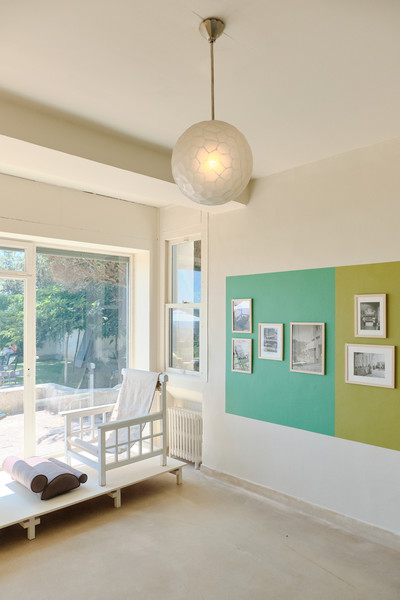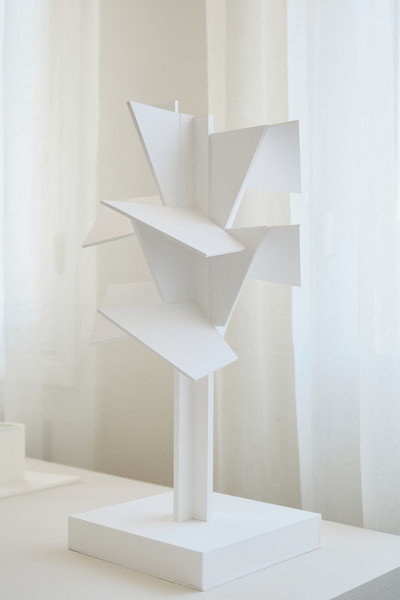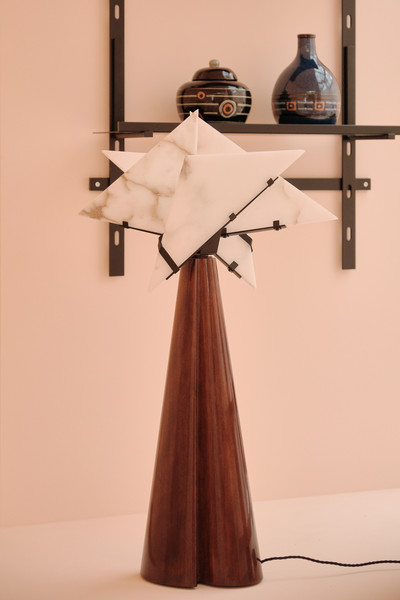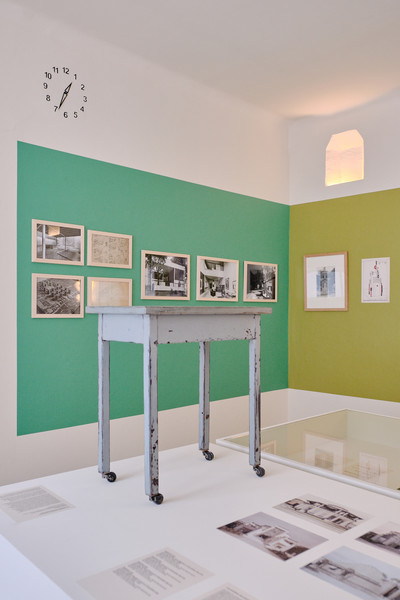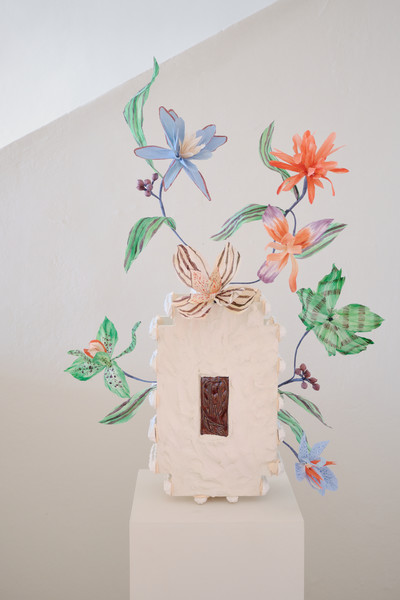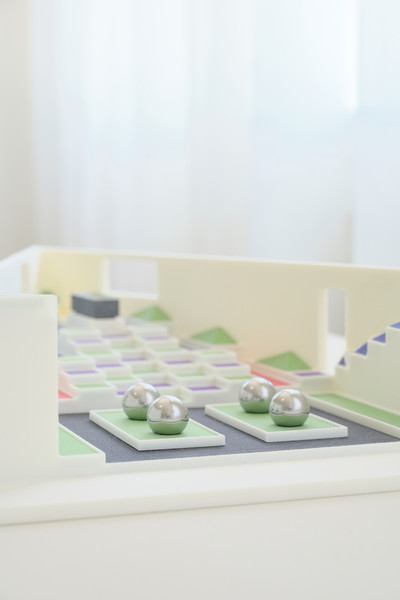Charles et Marie-Laure de Noailles à l’Exposition des arts décoratifs de 1925
On April 29, 1925, Charles de Noailles wrote to Robert Mallet-Stevens: “Alas, I won’t be returning to Paris until May 15, so I won’t be able to see the Exposition I’m so looking forward to until then. I’ve just seen the Illustration, where I find that your tourist resort is by far the most successful.”
The patron admires the tourist pavilion built by the architect for the Exposition internationale des arts décoratifs et industriels modernes [International Exhibition for Decorative, Modern and Industrial Arts]. Organized along the lines of the great world’s fairs, the Paris exhibition attracted 21 nations and over 15 million visitors between April 28 and October 25, 1925. Its aim was twofold. On the one hand, it was to promote modern decorative arts to the general public, in response to contemporary needs, customs and lifestyles, through the alliance of art, science and industry. Secondly, it aims to establish France in a field – the decorative arts – in which it is lagging behind, particularly on the European market.
It is therefore intended as a manifesto of the cultural renewal that characterizes the era in all areas. This new art of living, which embraced technical progress, accompanied the development of a society focused on technology, hygiene, comfort and speed. The exhibitors were divided into two groups: those who upheld a precious French tradition, and the moderns, who joined forces a few years later to form the Union des artistes modernes (UAM).
When they went to the exhibition, Charles and Marie-Laure de Noailles had already taken possession of their newly completed modernist villa in Hyères. In 1923, when commissioning Robert Mallet-Stevens, Charles de Noailles wanted to “employ all modern means to achieve maximum efficiency and convenience” in a house that embraced the hygienist trend, offered all the amenities of comfort, and where the traditional uses of rooms were reconsidered. Emphasis was placed on functionality, with an economy of fixed decorative elements, space-saving furniture and built-in storage to free up wall space. By 1925, most of the furnishings had already been ordered and installed, but the couple were keen to discover new artists and solutions at the Exhibition to perfect their installation. While they drew on the modern trend for Hyères, at the same time the Noailles were refurbishing their classic Parisian townhouse in the refined, luxurious taste that triumphed in many of the pavilions – so much so, in fact, that the name of the exhibition was used to refer to this trend as “art deco”.
For his work at the exhibition, Robert Mallet-Stevens called on a number of artists with whom he was accustomed to working, and who were also to be found at the villa in Hyères. Master glass artist Louis Barillet, who designed the large frieze of French monuments in the Tourism pavilion, created the stained glass windows on the north façade of the Clos Saint-Bernard. Brothers Jan and Joël Martel, whose bas-reliefs in the same pavilion celebrate modern modes of transport, designed a polyhedral mirror for the reading room. This collaborative dynamic was successfully developed in the pavilion of the Société des artistes décorateurs. Robert Mallet-Stevens, Pierre Chareau and Francis Jourdain share four particularly remarkable rooms, which form an ensemble inside the pavilion and are united by the modernity of their modular and functional furnishing solutions, some elements of which found their way into the Noailles home.
In addition to the architect’s recommendations, the Noailles’ patronage also enabled them to identify and commission artists, such as the stools and pedestal table by decorator and interior designer Blanche Klotz, and Raoul Dufy’s fabrics for the furniture in the reading room.
The exhibition also focuses on gardens, a passion of Charles de Noailles, who was particularly interested in the architectural proposals of another Robert Mallet-Stevens collaborator, Gabriel Guévrékian. His radical garden, where colored glass slabs enhance the flower beds, so impressed the viscount that he commissioned a replica, adapted to the constraints of his villa’s terrain. Even today, this avant-garde garden represents the prow of a modern ocean liner, emblematic of a total architectural and decorative program.
Cinema also played an important role at the exhibition, and Robert Mallet-Stevens, who had made a name for himself as a studio decorator, was one of the architects. The aim was to defend the French Impressionist avant-garde against the German and American film powers. As early as 1924, Marcel L’Herbier’s film L’Inhumaine promoted the French decorative arts, particularly to foreign audiences, and foreshadowed the exhibition the following year. Mallet-Stevens and Fernand Léger designed the sets. Pierre Chareau designed the furniture and Paul Poiret the costumes, while Darius Milhaud composed the music. This experience, repeated in 1926 with the film Le Vertige, confirms the creative fruitfulness of the alliance between personalities and artistic disciplines. Some of Mallet-Stevens’s decorative finds for the cinema were to take their place in the Hyères villa. Charles de Noailles also supported the Cinégraphic production company. The latter produced the film Biceps et bijoux by Jacques Manuel, assistant to Marcel L’Herbier, shot at the Clos Saint-Bernard.
The 1925 Decorative Arts Exhibition had a decisive influence on the aesthetic choices of Charles and Marie-Laure de Noailles, not only in terms of the diversity of pieces and styles on display, but also in terms of the innovations it brought to the fore. One hundred years later, the Villa Noailles has been refurbished in the original atmosphere of the Clos Saint-Bernard, when the house was a laboratory of modernity, reflecting the research, ambitions and creative ferment of a pivotal period in the development of the decorative arts. Visitors will be able to follow in the footsteps of the house’s patrons through the works, objects, artists and motifs that shaped the taste of the two patrons and marked this creative revival.
Curation : Alexia Le Bris et Thomas Lequeu
Set design : Maria Jeglinska-Adamczewska, Office for design & research
In partnership with: Relax Factory, Codimat Collection.
Lenders of objects and furniture : Musée des tissus et des arts décoratifs de Lyon, Galerie Avenir, Maison Christofle, Galerie Doria, Fassen, Galerie Jacques Lacoste, Galerie Marcilhac, Galerie MCDE - édition Pierre Chareau, Centre national du cinéma et de l’image animé
Guest artists: Paul Bonlarron, Margaux Dereume and Elsa Py

